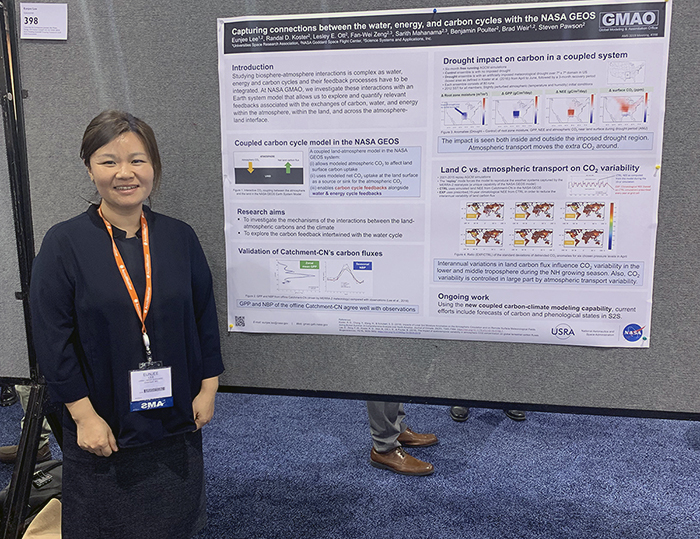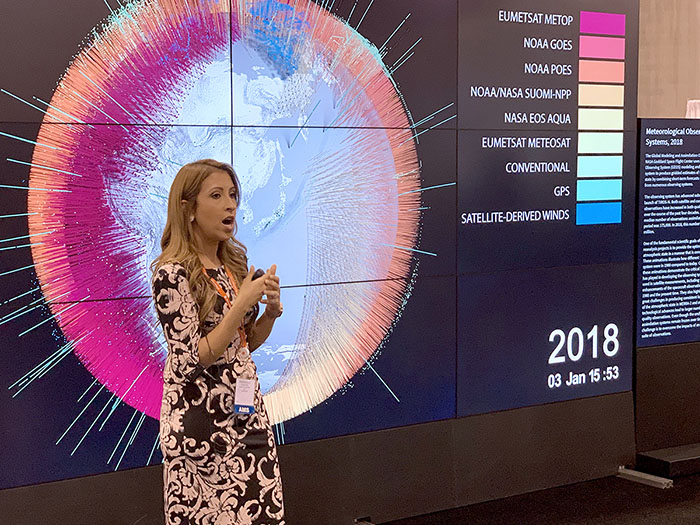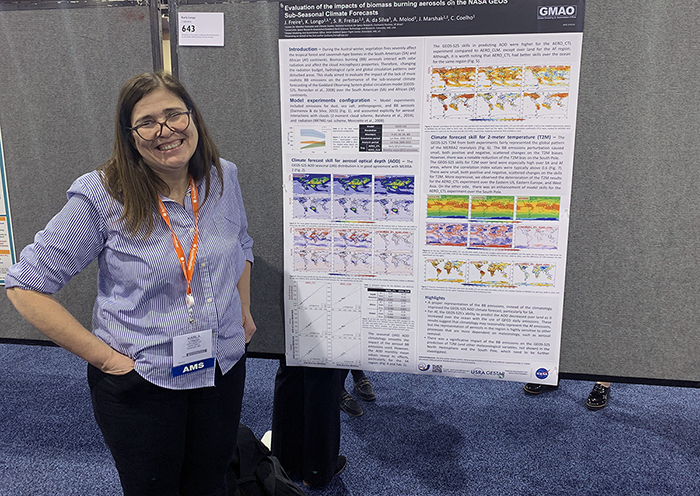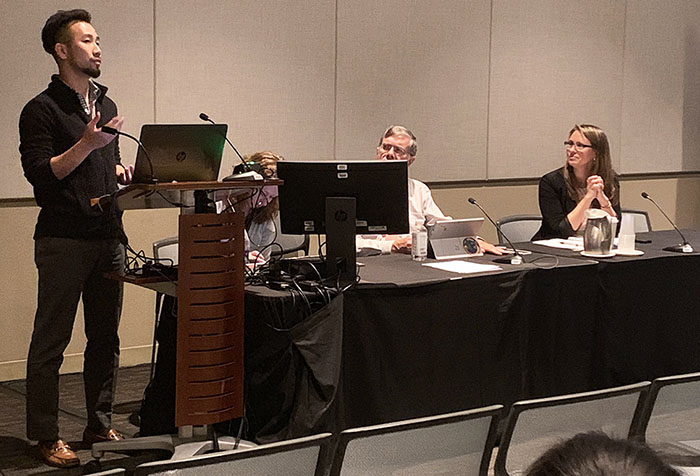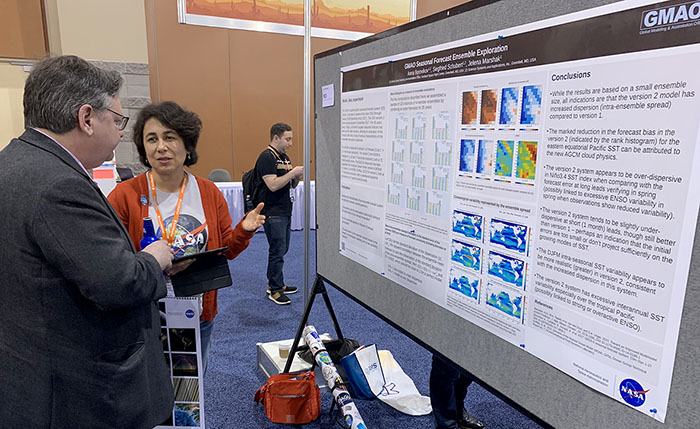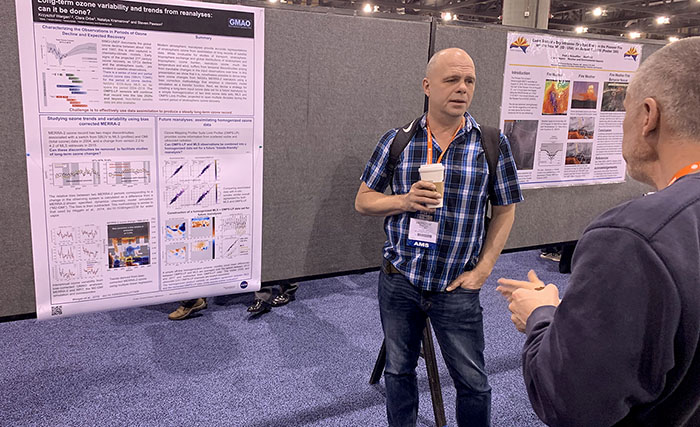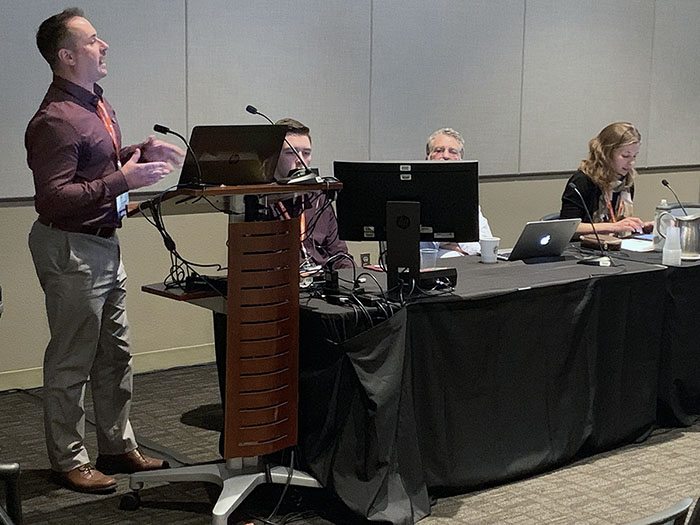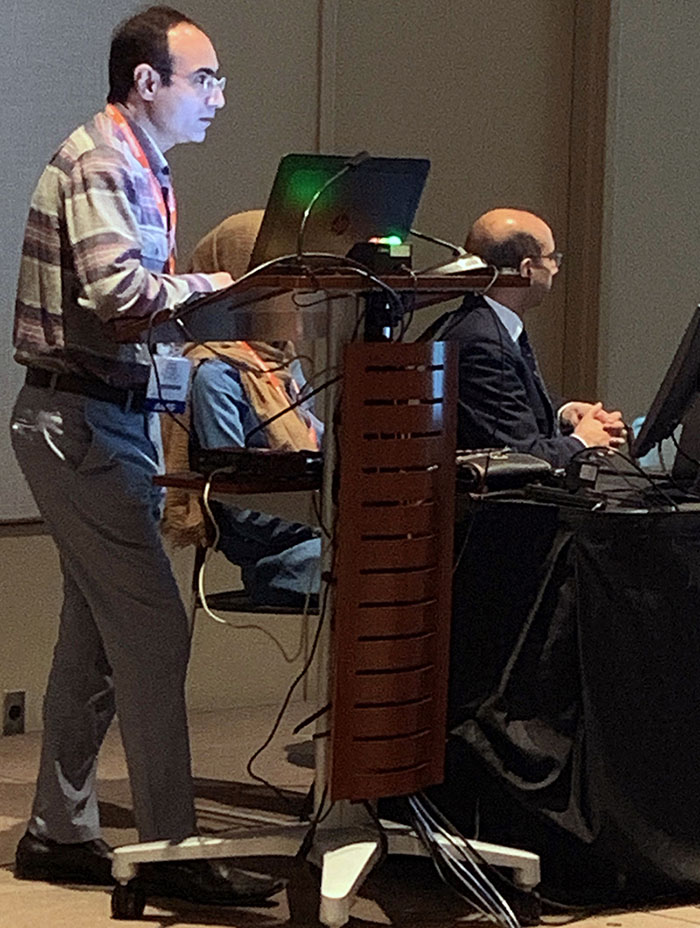GMAO Takes AMS by Storm in Phoenix, Arizona
02.07.2019
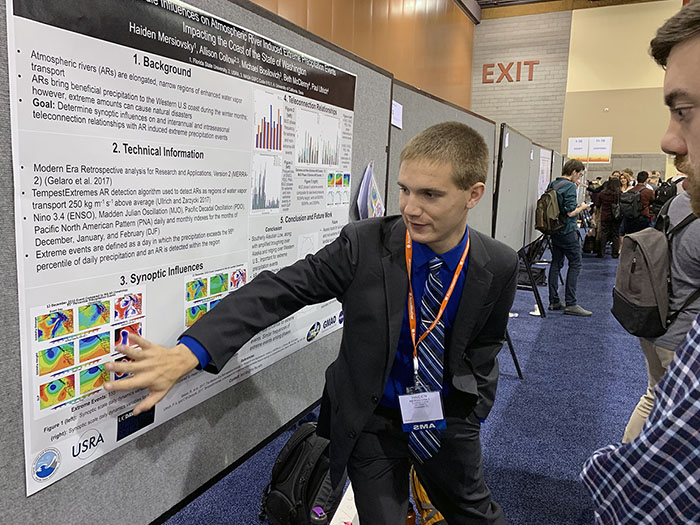
Representatives from NASA’s Global Modeling and Assimilation Office (GMAO) converged on the Valley of the Sun, otherwise known as Phoenix, Arizona, for the 99th Annual Meeting of the American Meteorological Society (AMS) in early January 2019. The desert climate provided a nice backdrop to a busy week of speaker panels, poster sessions and Hyperwall presentations.
Topics covered ranged from the study of catastrophic hurricanes Juan and Harvey, to the deadly Dehli air pollution event in 2017. Despite the ongoing government shutdown, the sessions were well-attended. In the exhibit hall, GMAO contractor staff gave popular Hyperwall presentations throughout the week at the Earth Science booth.
Below is the list of oral and poster presentations from AMS 2019. You can see PDF versions of the posters at https://gmao.gsfc.nasa.gov/pubs/index.php?sel=posters&yr=2019
Oral Presentations:
Marangelly Fuentes – “Comparing flood-producing catastrophic hurricanes in GEOS: A study of Juan 1985 and Harvey 2017”
Ron Gelaro (presented by Dan Holdaway) – “Impact of GMI all-sky radiance assimilation in the NASA GEOS forecast system”
Eunjee Lee – “Quantifying contributions of land carbon fluxes variability and atmospheric transport variability to atmospheric CO2 variability”
Isaac Moradi – “Assimilation of all-weather microwave cloudy radiances using a novel Bayesian Monte Carlo Technique into NASA GEOS-5”
Tomohiro Oda – “Exploring the synergistic use of OMI NO2 data with CO2 data collected from GOSAT and OCO-2: Current status, challenges and implications for upcoming carbon missions”
Gary Partyka – “The Deadly Delhi Air Pollution Episode of November 2017; As Seen by NASA GMAO Models”
Steven Pawson (presented by Kris Wargan) – “Connections Between the Stratosphere and Surface Weather Associated with the Stratospheric Sudden Warming in Early 2018”
Ehud Strobach – “An Ocean-atmosphere Simulation for Studying Air-sea Interactions”
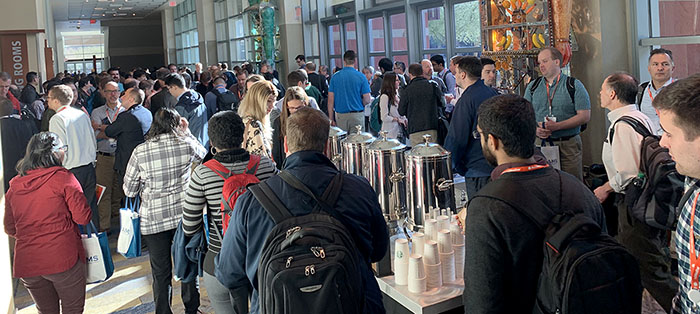
Posters:
Anna Borovikov – “Assessing the quality of seasonal ensemble forecasts”
Allie Collow – “Large Scale Influences on Atmospheric River Induced Extreme Precipitation Events impacting the Coast of the State of Washington”
Saulo Fritas – “Including a cold pool representation in a convection parameterization and simulating its impacts on the spatial and temporal variability of the precipitation in the NASA GEOS-5 GCM”
Eunjee Lee – “Capturing the connections between the water, energy, and carbon cycles with the NASA GEOS Earth modeling system – coupling framework and initial experiments”
Karla Longo – “Evaluation of the Impacts of Biomass Burning Emissions on the NASA GEOS Seasonal Climate Forecast”
Isaac Moradi – “CRTM Support to GMAO, Validation and Coefficient Generation”
Kris Wargan – “Long-Term Ozone Variability and Trends from Reanalyses: Can it be Done?”
